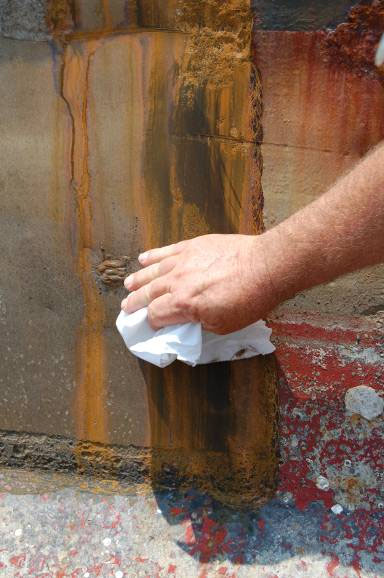For the first time in several months, the morning temperature dropped below 60F. I struck the flint on our first fire in the cast iron chimineas at 6 o’clock in the morning so that we could enjoy our hot coffee while savoring a bit of campfire nostalgia. By the time everyone had arrived, the fire crackled merrily and provided some welcome warmth.
The five of us talked about our various travel plans for the autumn, some of us looking forward to arriving in New England in time to catch the leaf colors at their height. The acorns were falling off a nearby tree, rattling down the tin roof on the way to the ground. We got interested in a story about how bluejays and stellar jays are critical to the deployment of acorns so that oak trees continued to propagate. Squirrels are often credited with burying acorns from which mighty oaks grow, but it’s not really true. The squirrel takes a bit out of the acorn so it won’t germinate. Jays, on the other hand, select only perfect acorns to bury—up to a couple of miles from the original tree.
Talk turned to how we enjoyed watching wildlife. Most of us seem to have started as children because our parents were avid nature watchers. Perhaps there is a gene for such things.
The most common memory was watching deer grazing a meadow at twilight, just as the full moon was rising and the fog began forming above the grass. These were trips in the family car out to the ranch or the park just at dusk. Parked, lights and engine off, with children silently watching through rolled-down windows, the animals appeared mysteriously from the woods.
One person from west Texas talked about her parents driving out of town on the ranch roads after dark, slowing down, and looking at the rattlesnakes bedded down on the warm asphalt. She recalled that her daddy liked to get out of the car and see how big some of the snakes grew. Her mother commonly locked the door after her father’s exit, something that seemed to have stirred a bit of marital disagreement.
My personal favorite experience was sitting in our boat with my father way up at the end of Butler Creek in the Osage Hills of northeastern Oklahoma. As the twilight deepened, the larger of the smallmouth bass would start to leap from the water, splashing in the pink, mirror-smooth surface along the grassy banks. If I could get my little Hula Popper to drop in just the right place, I could often catch one.
My wife had stayed silent during these personal recitals. She is an avid nature fan, so I was curious what jewel she would offer us.
She might have looked slightly crestfallen as she explained that her parents took them out to the Aluminum smelter and parked near the lighted sign along the road. There, they spent time watching a family of skunks enjoying their life as part of Alcoa’s Affirmative Action Program for wildlife.
Coming after our solemn, almost romantic recitals, her story was so funny we couldn’t stop laughing until the tears ran out. I hope we didn’t hurt her feelings. Skunks are, after all, interesting creatures.












September 27, 2010
Feature